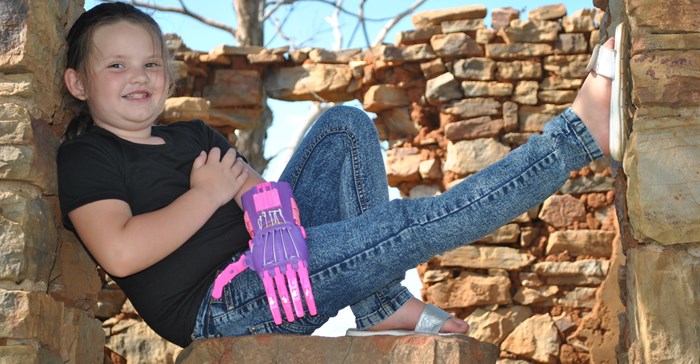
Top stories


EducationFrom adversity to opportunity: African education’s revival strategies
Sanjeev Mansotra 18 hours



Marketing & MediaThe Odd Number named Financial Mail AdFocus Mid-Sized Agency of the Year
The Odd Number 22 hours

More news












Case study
Six-year-old Meagan van der Merwe was born with symbrachydactyly, which resulted in her left hand not developing fully. She has movement in her wrist, but her fingers are tiny nubbins. While Meagan has managed to live a full and active life despite her challenges, her parents were eager to find a workable solution.

Through their research they discovered that a moulded, immoveable prosthetic hand would cost in excess of R200,000, and would need to be replaced every 18 months as Meagan grows. A more functional model would cost even more.
That’s when the family heard about 3D printing.
“We saw interviews on Carte Blanche and Kyknet’s Kwela about 3D printing, and we thought it would be great if we could give Meagan the opportunity to make things easier for her,” says her mother, Michelle van der Merwe. “We started doing some research, contacting people and finding options to consider.”
After approaching a company in the Free State to help them find a way to print a hand for Meagan, and encountering a few challenges, they eventually made contact with a Johannesburg-based company.
Jared de Waal, business development manager at Solid Edge Technology, explains the process. “The first step for us was to find the right links to the files we would need to print a suitable hand for Meagan – fortunately, the 3D printing ecosystem makes many of its designs public.
“Once we downloaded the design files, we were able to convert these to a native format that we could use. Then, to ensure the hand we printed would be the right size for Meagan, we took a measurement across a section of her hand, which we applied to a calculation in order to scale the original file.”
The company printed a prototype and invited Meagan and her family in to have it fitted and to test its functionality and comfort. Once they were satisfied, Meagan was able to choose her colours – she opted for pink and purple – and de Waal and his team printed and assembled the hand, made up of 12 unique parts and 31 individual 3D printed components, using a MakerBot 3D printer.
The process, including printing and assembly, took roughly 24 hours, with a total cost of less than R1,000.
De Waal predicts that they will need to print a new hand every 18 months to accommodate for Meagan’s growth, as is the case with a standard prosthetic. “We have decided to take Meagan on as a lifetime case study, whereby we will replace the hand or its parts and customise as needed, while also using this as an opportunity to gain knowledge and experience around a very new and exciting element of 3D printing.”
Part of the learning curve will be to observe how Meagan manages to use the existing design and then look at how to improve its functionality in the future.
Van der Merwe explains, “We’ve adjusted the strings of the hand so that it grips better and we’ve replaced the Velcro strip with a bigger one to keep the hand more secure on Meagan’s arm. We also got her a leather sleeve to protect her arm from bruising.”